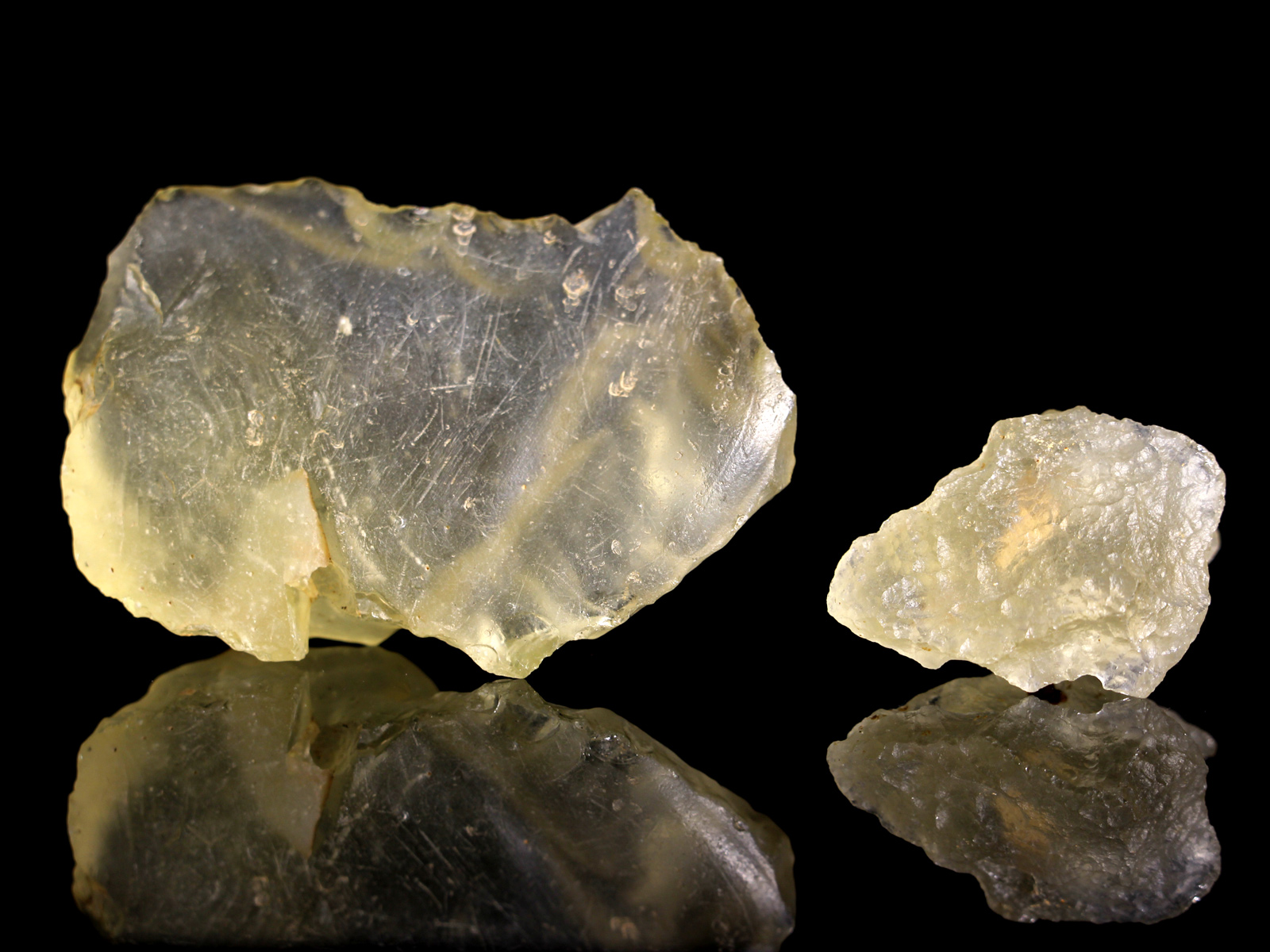Libyan glass - A geological mystery from the ancient past
Approximately 28.5 million years ago, during the Tertiary period, one of the most remarkable geological events occurred in the Libyan desert. An enormous meteorite, 1 to 1.5 kilometres in diameter, struck the Earth and caused an explosion of incredible power. The temperature at impact exceeded 1700 °C, enough to melt the surrounding sand and create the unique natural glass we now call Libyan Desert Glass (LDG). This mysterious material, known for its high purity and strange colour, has become one of the most interesting geological finds in the world.
Libyan glass is usually yellow or slightly greenish in colour, and comes in a variety of sizes - from tiny pieces weighing a few grams to massive pieces weighing up to 30 kilograms. Its origin has long been a mystery. It was not until 1932 that it was first described in detail by P. A. Clayton and Leonard James Spencer. However, archaeological findings have shown that this material was known in ancient Egypt. The most famous example of its use is the necklace of Pharaoh Tutankhamun, where the glass scarabs were made of Libyan glass. This discovery sparked a huge interest in this material and its historical use.
While there were previously various theories about the origin of Libyan glass, modern scientific research has produced two main hypotheses. The first claims that the glass was formed during an airborne meteoroid explosion that ripped through the atmosphere, creating hot particles that scattered across the surface. The second theory, which seems more likely today, is that the Libyan glass was formed directly by a meteorite impact on the Earth's surface. This impact would have required tremendous pressure to create glass with unique physical properties.

Geologists from Germany, Egypt and Morocco, who examined Libyan glass under a microscope, discovered four different forms of zirconium in its composition. Two of them, known as cubic zirconia and the rare ortho-II, are evidence of the extreme conditions created by the meteorite impact. Cubic zirconia is formed at high temperatures, which would be consistent with an airburst, while ortho-II requires both high temperatures and high pressure - conditions that would have been created by a direct meteorite impact.
The location where the meteorite struck the Earth and formed a huge crater is still unknown. Yet geologists have been able to identify areas in Libya where large amounts of Libyan glass are found. The nearest meteor craters in the area, 2 and 18 km across, are too small to be the source of this glass. This suggests that there is a larger, as yet undiscovered crater that could be the "mother" site for the formation of Libyan glass.
Libyan glass is not only a fascinating geological phenomenon, but also valuable evidence of the forces that have shaped our planet. Wherever it comes from, its unique properties and historical significance make it a valuable lens for scientific research and the study of human history.
